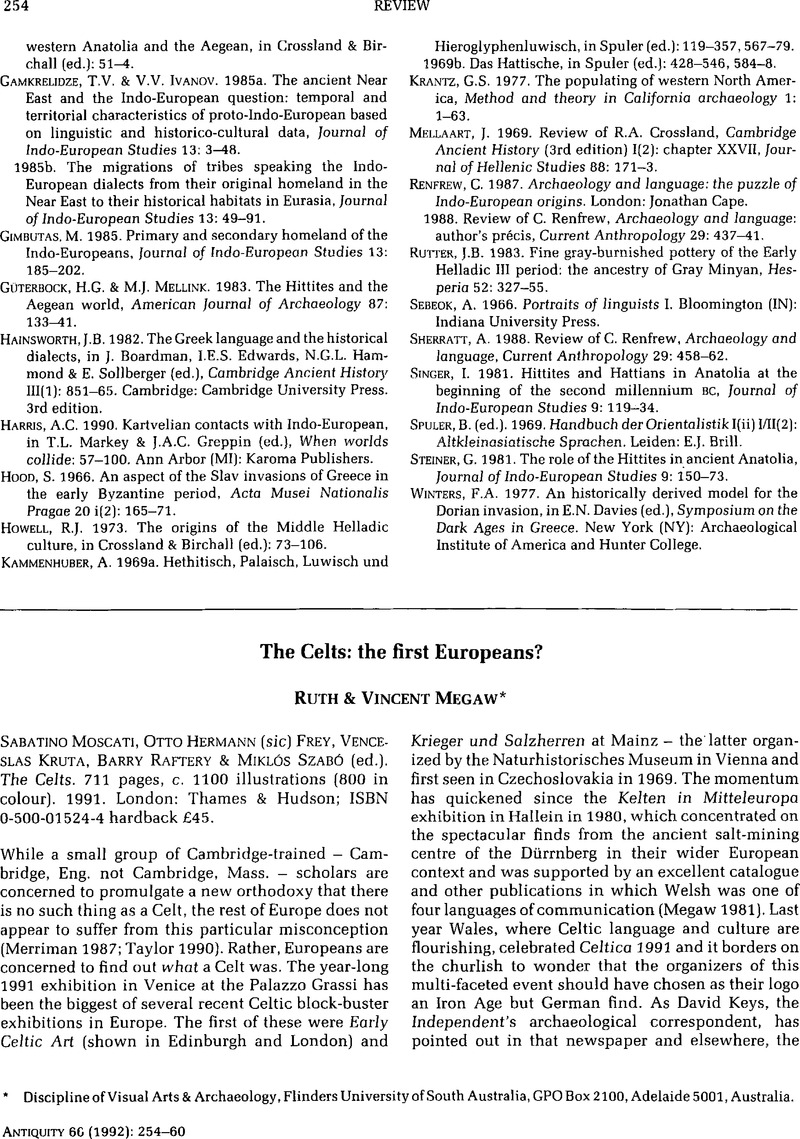Crossref Citations
This article has been cited by the following publications. This list is generated based on data provided by Crossref.
Megaw, Ruth
and
Megaw, Vincent
1994.
R. Cordie-Hackenberg, R. Geiss-Dreier, A. Miron & A. Wigg (ed.). Hundert Meisterwerke keltischer Kunst: Schmuck und Kunsthandwerk zwischen Rhein und Mosel. (Schriftreihe des Rheinischen Landesmuseums Trier 7.)
216 pages, 29 colour, 245 b&w illustrations. 1992. Trier: Rheinisches Landesmuseum; ISBN 3-923319-20-7 paperback. -
H. Dannheimer & R. Gebhard (ed.). Das keltische Jahrtausend. (Ausstellungskataloge der Prähistorischen Staatssammlung 23.) 400 pages, 12 colour, 392 b&w illustrations. 1993. Mainz: Philipp von Zabern; ISBN 3-8053-1514-7 paperback..
Antiquity,
Vol. 68,
Issue. 258,
p.
182.
Megaw, Ruth
and
Megaw, Vincent
1994.
Through a window on the European iron age darkly: Fifty years of reading early Celtic art.
World Archaeology,
Vol. 25,
Issue. 3,
p.
287.
Megaw, J. V. S.
and
Megaw, M. R.
1996.
Ancient Celts and modern ethnicity.
Antiquity,
Vol. 70,
Issue. 267,
p.
175.
2001.
The Quest for the Origins of Vedic Culture.
p.
v.
2001.
The Quest for the Origins of Vedic Culture.
p.
iv.
Megaw, Vincent
2007.
Imag(in)ing the Celts.
Antiquity,
Vol. 81,
Issue. 312,
p.
438.
Megaw, Vincent
2010.
Bearing the truth about Celtic art: Kunst der Kelten in Bern.
Antiquity,
Vol. 84,
Issue. 323,
p.
250.
Megaw, Vincent
2012.
The Flying Dutchman reaches port.
Antiquity,
Vol. 86,
Issue. 332,
p.
546.
Campos Calvo-Sotelo, Javier
2017.
I Celti, la prima Europa: The Role of Celtic Myth and Celtic Music in the Construction of European Identity.
Popular Music and Society,
Vol. 40,
Issue. 4,
p.
369.
Pope, Rachel
2022.
Re-approaching Celts: Origins, Society, and Social Change.
Journal of Archaeological Research,
Vol. 30,
Issue. 1,
p.
1.



